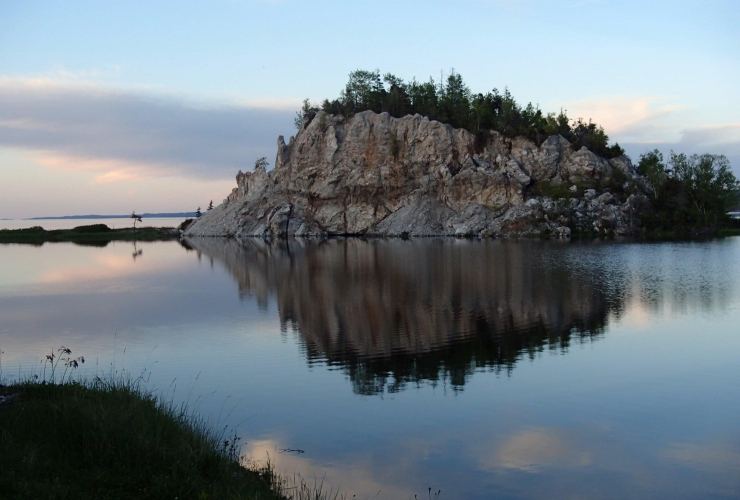Nova Scotia's new plan to protect the province's 13,000 kilometres of coastline is an abdication of the government's responsibility, the opposition and environmental activists said Monday.
The strong criticism came swiftly after Environment Minister Tim Halman announced the strategy and confirmed that the Progressive Conservative government would not put into force the Coastal Protection Act, which was passed in 2019 by the Liberals with support from all parties in the legislature.
The act would have offered more protection to coastal areas such as dunes and salt marshes, and would have restricted development along parts of the coastline at risk of heavy erosion.
Instead, the government's new plan shifts much of the responsibility for coastal protection to individual property owners and municipalities.
“They’ve abdicated their responsibility to Nova Scotians on the issue of coastal protection,” said Liberal critic Braedon Clark. “They’ve downloaded this responsibility to municipalities and they’ve given them very little resources to come up with their own bylaws and enforce them.”
Lisa Lachance, the NDPs environment critic, said the Tory government’s decision was “deeply disturbing.” She said she has received "hundreds of emails" asking for the legislature to proclaim the law, or set it into force, "and the government has clearly walked away from that today."
The government’s new plan contains 15 actions, including one that offers homeowners and municipalities access to an online hazard map that shows the worst-case scenario for sea level rise along the coast in the year 2100. Officials said more data would be added to the map over the coming months, including projections for coastal erosion and sea levels for 2050.
Halman said the three-year plan, which cost more than $3 million, also includes the creation of a four-person navigator service to help property owners understand the hazard map. As well, municipalities will be given draft examples of content they can use to enact coastal land-use bylaws, he said. There will also be a re-evaluation of the existing $200,000 cap on disaster relief funding in order to discourage development on coastal land at risk of flooding and erosion.
About $1.6 million of the funding will go toward an ongoing project to produce municipal flood mapping across the province. Officials said about one-third of the province has been mapped so far, with the project’s completion date expected as early as 2027.
“The reality is the legislation passed in 2019 only focused on new builds, it did not consider existing homes,” Halman said. “This plan is meant to help all coastal property owners, not just people who are building.”
In a statement, the Nova Scotia Federation of Municipalities (NFSM) said it is disappointed in the government’s shift to municipal land-use planning and is seeking clarification for its 49 members.
“NSFM will persist in seeking clarification on the allocation of resources to support municipalities, particularly those in rural areas or with limited planning capabilities,” the federation said.
The government plan was announced after three rounds of public consultation on the Coastal Protection Act. The minister said during the latest round that 40,000 questionnaires were distributed to owners of coastal property, adding that the response was “not that great” with just 1,070 replies.
Halman would not say how many people wanted the act proclaimed, saying only that “there is a diversity of opinion out there.”
Meanwhile, the Halifax-based Ecology Action Centre panned the government’s plan as a “failure of leadership.”
“Instead of saying this is where it’s safe and this is where it’s not safe they are just saying read up on the risks and here’s a map,” said Marla MacLeod, the centre’s director of programs. MacLeod said she was aware that more than 1,000 people had written letters calling for proclamation of the act and for provincial regulations.
“We are in a climate emergency and in an emergency we need people to take responsibility and leadership and the province is failing miserably,” she said.
This report by The Canadian Press was first published Feb. 26, 2024.
Municipalities are interested
Municipalities are interested in increasing their revenue from property taxation and have shown little interest in curbing growth along coastlines. Nova Scotians value coastal vistas but people continue to build inappropriate homes in inappropriate locations ruining the views that they moved here for. Climate change is accelerating, North Atlantic storms are becoming more intense, Nova Scotia coastlines are sinking and many are already witnessing erosion of their land. We elect politicians to lead but they have much shorter time lines and prioritize being re-elected. Nova Scotians have clearly indicated a desire and need for central coordination on this issue. It is possible for communities to organize, hold public sessions, develop a plan of how they would like to see things evolve and then take this plan to their municipality. Years ago this was proposed in the Riverport and 2nd Peninsula areas of Lunenburg County. This was misunderstood, residents objected saying that they were all good neighbours and would just talk things out over the fence or that there were too many regulations already and they didn’t want anybody telling them what they could do with their property. That generation is mostly gone and the opportunity for communities to plan for themselves and future generations has been lost in many areas of the province.





Comments